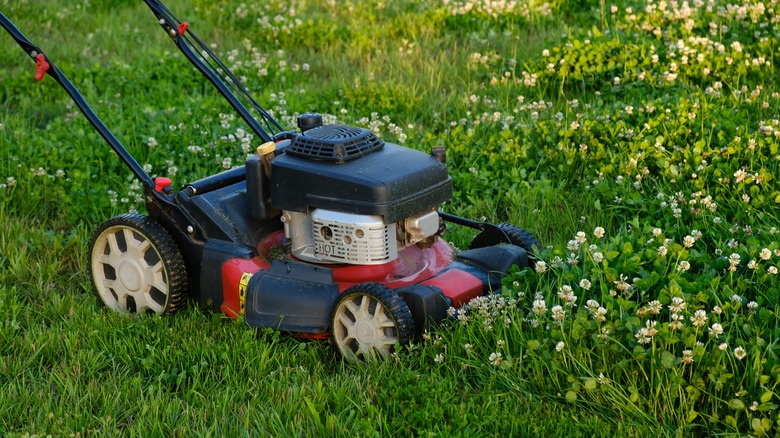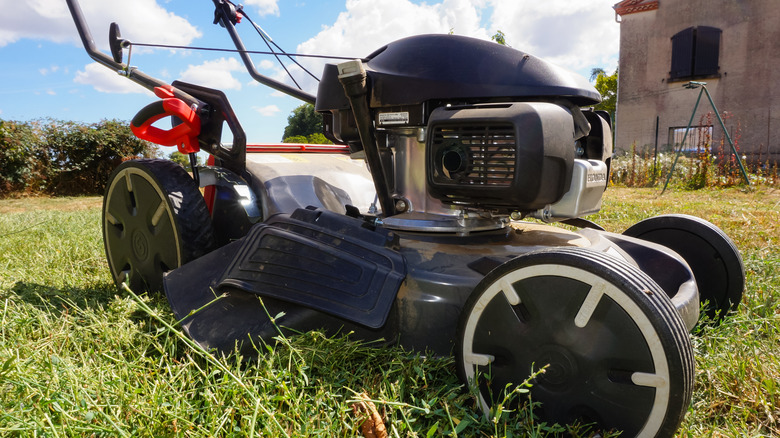Side Discharge Vs Mulch Mowing: Deciding What's Best For Your Lawn
It's important that you're using the right mower for your grass, and picking between side discharge and mulch mowing is one of the most debated choices in lawn care. Each method offers its own advantages depending on your grass type, climate, and maintenance goals. Side discharge mowing shoots clippings out the side of the mower, leaving cut grass that eventually decomposes back into your soil. Mulch mowing uses special blades that cut and recut clippings into fine mulch that lands back into the yard. Another difference is that side discharge will remove more of that material from the immediate cutting area, while mulching drops almost all the clipping back into the lawn.
There are a few mechanical differences that affect the performance in different conditions as well. Side discharge typically provides cleaner cuts in tall or wet grass since it doesn't recirculate the clippings through the cutting deck. This makes it the preferred method during peak growing seasons or after some rain. Mulch mowing works best in dry conditions where chopped-up clippings can quickly work down to the soil without clumping up too much. The choice between methods also affects your lawn's health. Mulching helps return nutrients back into your grass, acting almost as a fertilizer, while side discharge may need a separate fertilizer more often to maintain healthy soil.
When side discharge mowing makes the most sense
Side discharge mowing prioritizes cutting efficiency over the nutrient recycling that mulching provides. This works best when dealing with overgrown lawns, as the immediate removal of clippings prevents the mower from getting bogged down in heavy grass. If you have a built-in irrigation system, side discharge mowing might be better to avoid small mulched debris from clogging your sprinkler heads. Another added benefit is that compost bins love leftover grass clippings, and the side discharge method keeps a steady stream of this beneficial material.
There are some drawbacks to side discharge mowing, though. Visibly, the row of clippings can create an uneven appearance for a few days after mowing, which could bother those who care a lot about curb appeal. This method also requires more lawn cleanups since the initial ejection and wind can spread the clippings onto walkways or flower beds. For the more eco-conscious, side discharge can be considered a waste of nutrients that would otherwise feed the lawn. This could potentially increase fertilizer requirements, wasting not only more of your time but more of your money as well. If you are using the side discharge method, you must mow more often, never removing more than one-third of the grass height, to prevent overwhelming the lawn with clippings.
The advantages and limitations of mulch mowing
Mulch mowing is a much more sustainable option and will help gradually improve your soil as you do it. The process creates a natural fertilizer as the tiny clippings start to decompose, providing some much-loved nitrogen to your lawn. This method works well for warm-season grasses like Bermuda or Zoysia, both of which thrive on organic matter. The mulch helps them develop deeper root systems and better resistance during droughts. Mulch mowing also saves you a lot of time by completely eliminating the disposal work, although you will have to spend a little extra effort cleaning the mower more often. The finely chopped clippings almost disappear after a couple of hours under proper conditions, creating a much quicker curb appeal for your lawn.
As with side discharge, there are some downsides to the mulching method as well. Mulch mowing works poorly on wet grass, often resulting in large clumps that can smother sections of your lawn if not properly broken up. The process requires very sharp blades, and due to its limitations in thick grass, you'll need to mow more frequently to keep your lawn tamed. This method also provides less consistent results on uneven lawns where high spots may show more leftover clippings for longer than low areas. You will need to make sure your mower has sufficient engine power to maintain blade speed while it's mulching. In the end, knowing exactly what you want from your landscape and what type of grass you have should help you decide which method will get the most out of each mow.


